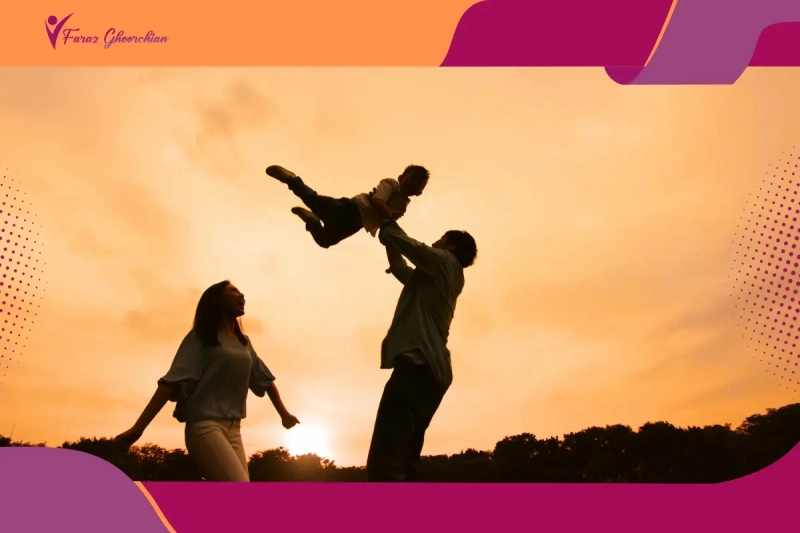Discover the types of basic emotions in psychology with definitions, examples, and lists. Learn how emotions shape human behavior and relationships.
- 1. Introduction: Why Study Emotions?
- 2. What Are the Basic Emotions and Moods?
- 3. Theories Behind Emotions in Psychology
- 4. The 7 Basic Emotions in Psychology
- 5. Extended Types of Emotions: Primary and Secondary
- 6. A Simple List of Emotions for Everyday Understanding
- 7. Cultural Perspectives on Emotions
- 8. Emotions and Relationships
- 9. Practical Applications of Emotions
- 10. Conclusion: Emotions as Human Compass
Introduction: Why Study Emotions?
Think about the last time you felt pure happiness, or the nervous flutter before speaking in public. These small but powerful moments are built on the types of basic emotions that every human shares. They shape the way we talk to others, make choices, and even how we see ourselves. People who ask what are basic emotions are really asking how feelings guide both the ordinary and the life-changing parts of experience.
Psychologists point out in the basic emotions definition psychology that emotions are more than moods passing by. They are patterns, almost like a built-in compass that has helped humans survive and connect for centuries. By looking closely at the types of basic emotions, it becomes easier to understand reactions, strengthen relationships, and live with greater awareness of what drives behavior.
What Are the Basic Emotions and Moods?
Ask anyone what are basic emotions, and they’ll probably name feelings like happiness, sadness, or fear. These reactions don’t need teaching; they appear naturally from early childhood and follow us through life. The types of basic emotions are the raw building blocks of how people think, act, and relate to one another.
Psychologists often frame this idea in the basic emotions definition psychology, pointing out that emotions are survival tools as much as they are personal experiences. They help people notice danger, form connections, and give meaning to daily events. To make the idea easier to grasp, researchers often put together a types of emotions psychology list, which usually highlights:
- Joy, felt in laughter and shared moments
- Sadness, that slows us down when loss occurs
- Anger, rising when boundaries are crossed
- Fear, the instinct that keeps us safe
- Disgust, steering us away from what could harm us
- Surprise, pulling attention to something new
Looking at the types of basic emotions this way shows they aren’t passing moods. When studied as what are basic emotions in psychology, they reveal the hidden framework behind human behavior and relationships.
Theories Behind Emotions in Psychology
Why do people feel the way they do? That question has shaped psychology from its earliest days. William James once suggested that emotions come after the body reacts. In his view, trembling hands or a pounding heart are not the result of fear. They are what create it. Others challenged that idea, saying the body and the feeling rise together, two sides of the same coin.
Later, scientists began to see emotions less as mysteries and more as survival tools. A quick flash of anger can protect someone’s boundaries, while fear sharpens awareness when danger appears. This is why the types of basic emotions are often described as universal. More modern thinkers add culture to the picture, noting that people everywhere feel joy or sadness, yet the way those emotions are shown can differ widely. What all these theories share is the belief that emotions shape not just the inner world, but how people connect, respond, and live with one another.
The 7 Basic Emotions in Psychology
If you watch a toddler laugh or notice someone flinch at a sudden noise, you’re seeing emotions that don’t need to be taught. Psychologists often describe these reactions as the types of basic emotions that cut across cultures and languages. When asked what are the basic emotions psychology, most researchers point to a familiar set that shows up in nearly everyone.
The 7 basic emotions psychology are:
- Joy, felt in a smile that spreads without thinking
- Sadness, the heaviness that comes with loss or disappointment
- Fear, the jolt of alertness before a risky moment
- Anger, energy that rises when boundaries are crossed
- Disgust, the instinct to turn away from what feels unsafe
- Surprise, that quick spark when something unexpected happens
- Contempt, often revealed in a glance or tone that dismisses another person
Looking at the types of basic emotions this way, it becomes clear they are more than moods. The basic emotions definition psychology highlights them as part of human wiring. Exploring what are basic emotions in psychology shows how these seven feelings quietly guide choices, shape conversations, and influence daily life.
Extended Types of Emotions: Primary and Secondary
The types of basic emotions explain a lot, but they don’t cover everything people feel in daily life. Psychologists often separate emotions into types of emotions primary and secondary, which makes it easier to see how simple reactions grow into more complicated ones. When people ask what are the basic emotions of humans, the answer usually starts with joy, fear, or anger, yet those feelings often combine into something more layered.
Primary emotions appear quickly, almost like instincts. A sudden laugh, a flinch at a loud sound, or anger when treated unfairly are all examples. Secondary emotions tend to be slower and shaped by reflection or culture. They often come from mixing two or more primary feelings. A simple types of emotions list shows the difference:
- Primary emotions: joy, sadness, fear, anger, disgust, surprise
- Secondary emotions: guilt, shame, pride, envy, gratitude, nostalgia
Looking at the types of basic emotions this way shows how a basic feeling like sadness might grow into guilt, or joy might develop into pride. The list of basic emotions and feelings reminds us that while primary emotions are universal, secondary ones make human experience more personal and complex. Exploring what are the basic emotions psychology reveals how these layers influence choices, relationships, and identity.
A Simple List of Emotions for Everyday Understanding
Most people don’t walk around thinking in terms of theories. What they want is a way to put words to how they feel in the moment. Having a simple list of emotions makes that easier. Someone who asks what are basic emotions is usually looking for a guide that helps them explain what they’re going through, whether it’s joy at seeing an old friend or the frustration of missing a deadline. The types of basic emotions give the core foundation, but everyday life shows us a wider mix.
Here is a list of simple emotions that often comes up in conversation:
- Happiness
- Sadness
- Fear
- Anger
- Disgust
- Surprise
- Love
- Guilt
- Pride
- Hope
This types of emotions list is not meant to be perfect or complete, but it helps people give shape to feelings that otherwise stay vague. The types of basic emotions sit at the heart of these, while what are basic emotions in psychology explains how they connect to human survival.
Cultural Perspectives on Emotions
The types of basic emotions may be universal, but the way they show up is shaped by culture. Ask what are the basic emotions of humans, and psychologists usually point to joy, sadness, anger, fear, disgust, surprise, and contempt. Yet a quick look across countries shows that the expression of those feelings depends heavily on social rules.
In Japan, for instance, people often hide anger to protect group harmony, while in parts of the Mediterranean, raising one’s voice or gesturing broadly can be a normal way of showing the same feeling. A smile in some places reflects happiness, while in others it might be a polite mask. These small differences remind us that the types of basic emotions live in every person, but culture gives them different shapes.
Looking at the list of basic emotions and feelings in this light makes what are basic emotions in psychology less of an abstract idea and more of a reminder that emotions are both shared and deeply colored by tradition.
Emotions and Relationships
Every relationship, whether it is between friends, partners, or family members, is carried along by feelings. The types of basic emotions are there in the smile that makes someone feel seen, in the anger that sparks during an argument, or in the sadness that draws people closer for comfort. When psychologists explore what are the basic emotions psychology, part of their answer is that emotions act like a silent language, shaping how people connect long before words are used.
In practice, paying attention to the types of basic emotions can make communication gentler and more honest. A couple who admits to fear or disappointment instead of hiding it often finds the bond between them grows stronger. Developing real Emotional relationship literacy is about noticing those small cues, listening carefully, and choosing a response that shows care.
Even uncomfortable emotions have value. Anger can hurt if left unchecked, but it also points to needs that matter. The list of basic emotions and feelings shows that no reaction is wasted. At its heart, what are the basic emotions in psychology comes down to this: they are signals that keep relationships alive, vulnerable, and real.
Practical Applications of Emotions
Emotions are not abstract theories. They show up in the way people talk to colleagues, care for family, or even choose what to buy in a store. The types of basic emotions guide choices often before a person has time to think. When psychologists ask what are basic emotions in psychology, they usually point to joy, fear, anger, sadness, disgust, surprise, and contempt, but what matters is how those feelings play out in real life.
A few examples help bring this into focus:
- At work, recognizing frustration or excitement makes it easier to handle disagreements and keep projects moving.
- In classrooms, teachers who notice fear or joy can connect with students who might otherwise stay quiet.
- In health care, naming feelings from the list of basic emotions and feelings helps patients talk through stress and recover with support.
- In marketing, design relies on emotion, whether it is trust linked to color psychology blue or freshness tied to color psychology green.
Even small Color Psychology Tips remind us how strongly emotions shape choices. Paying attention to the types of basic emotions can make relationships more honest, workplaces calmer, and daily decisions clearer.
Conclusion: Emotions as Human Compass
The types of basic emotions are often spoken about in psychology, but outside the classroom they are the signals people use to steer through life. Ask what are the basic emotions psychology, and you’ll hear names like joy, anger, sadness, fear, or surprise. Yet these are more than labels. They show us when to hold on, when to let go, and when to seek support.
Noticing the types of basic emotions in everyday life makes choices clearer. Joy pushes us to share moments, anger warns when limits are crossed, and sadness reminds us of what we value most. The basic emotions definition psychology frames them as part of our design, but in practice they are the compass points that keep people grounded.
Understanding what are basic emotions in psychology is ultimately about listening to those signals. They help us stay true to ourselves, deepen relationships, and move through life with more honesty and balance.















